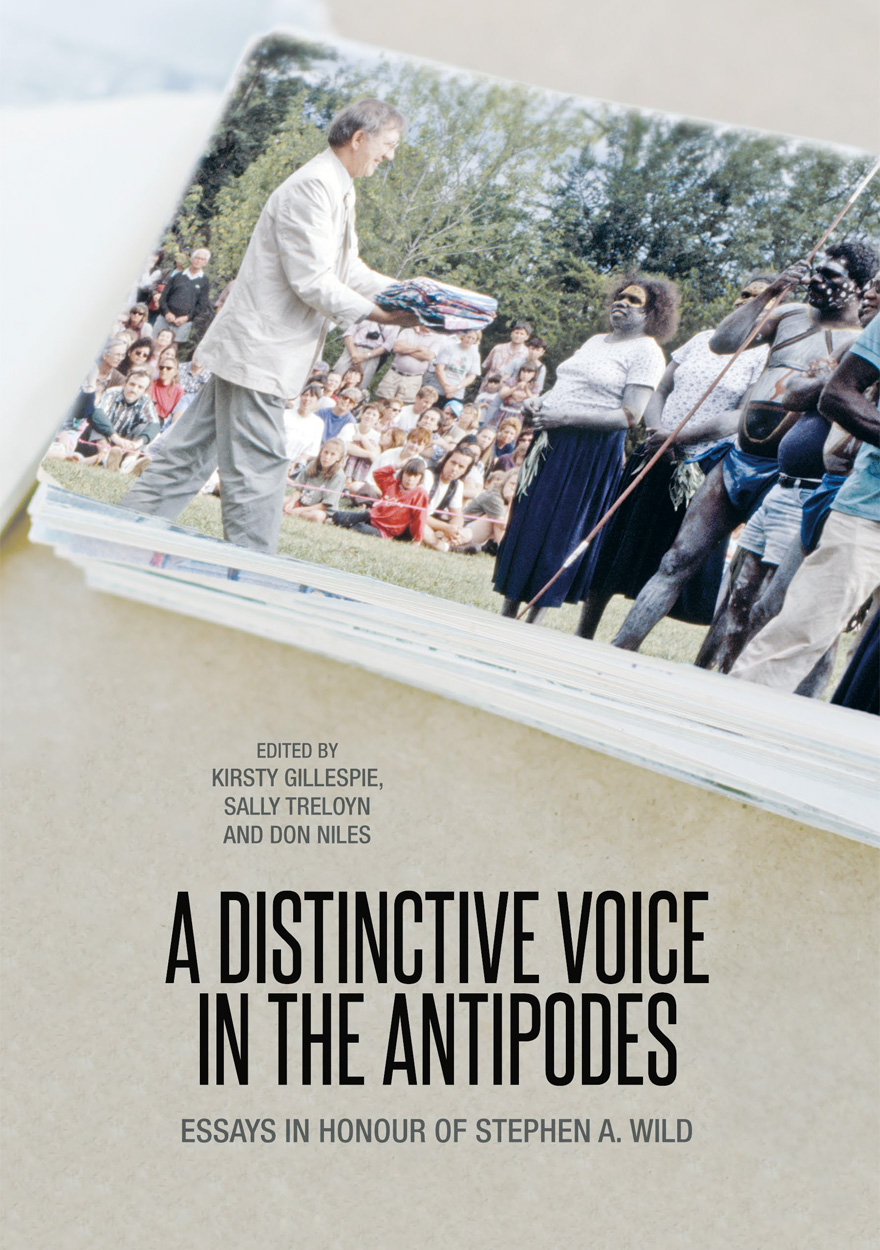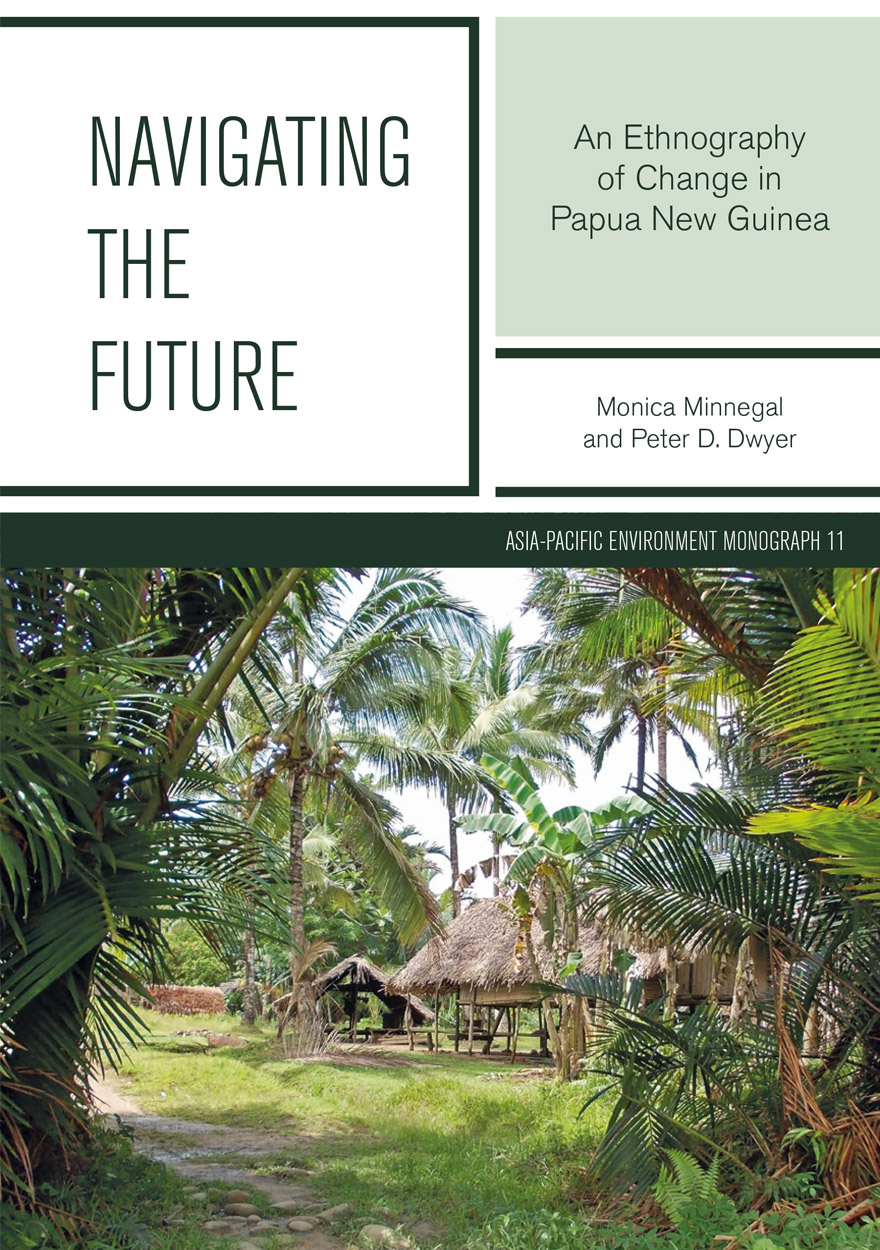Books
Browse or search ANU Press' range of books or find out more about the publications' authors and co-publishers. Download the book for free or buy a print-on-demand copy.
Displaying results 281 to 290 of 780.

The General’s Goose »
Fiji's Tale of Contemporary Misadventure
Authored by: Robbie Robertson
Publication date: August 2017
His admirers said he was a charismatic leader with a dazzling smile, a commoner following an ancient tradition of warrior service on behalf of an indigenous people who feared marginalisation at the hands of ungrateful immigrants. One tourist pleaded with him to stage a coup in her backyard; in private parties around the capital, Suva, infatuated women whispered ‘coup me baby’ in his presence. It was so easy to overlook the enormity of what he had done in planning and implementing Fiji’s first military coup, to be seduced by celebrity, captivated by the excitement of the moment, and plead its inevitability as the final eruption of long-simmering indigenous discontent. A generation would pass before the consequences of the actions of Fiji’s strongman of 1987, Sitiveni Rabuka, would be fully appreciated but, by then, the die had been well and truly cast. The major general did not live happily ever after. No nirvana followed the assertion of indigenous rights. If anything, misadventure became his country’s most enduring contemporary trait. This is Fiji’s very human story.

Sinuous Objects »
Revaluing Women’s Wealth in the Contemporary Pacific
Edited by: Anna-Karina Hermkens, Katherine Lepani
Publication date: August 2017
Some 40 years ago, Pacific anthropology was dominated by debates about ‘women’s wealth’. These exchanges were generated by Annette Weiner’s (1976) critical reappraisal of Bronisław Malinowski’s classic work on the Trobriand Islands, and her observations that women’s production of ‘wealth’ (banana leaf bundles and skirts) for elaborate transactions in mortuary rituals occupied a central role in Trobriand matrilineal cosmology and social organisation. This volume brings the debates about women’s wealth back to the fore by critically revisiting and engaging with ideas about gender and materiality, value, relationality and the social life and agency of things. The chapters, interspersed by three poems, evoke the sinuous materiality of the different objects made by women across the Pacific, and the intimate relationship between these objects of value and sensuous, gendered bodies.
In the Epilogue, Professor Margaret Jolly observes how the volume also ‘trace[s] a more abstract sinuosity in the movement of these things through time and place, as they coil through different regimes of value … The eight chapters … trace winding paths across the contemporary Pacific, from the Trobriands in Milne Bay, to Maisin, Wanigela and Korafe in Oro Province, Papua New Guinea, through the islands of Tonga to diasporic Tongan and Cook Islander communities in New Zealand’. This comparative perspective elucidates how women’s wealth is defined, valued and contested in current exchanges, bride-price debates, church settings, development projects and the challenges of living in diaspora. Importantly, this reveals how women themselves preserve the different values and meanings in gift-giving and exchanges, despite processes of commodification that have resulted in the decline or replacement of ‘women’s wealth’.

A Bark But No Bite »
Inequality and the 2014 New Zealand General Election
Publication date: August 2017
Based on New Zealand Election Study (NZES) data from a sample of 2,830 eligible voters, A Bark But No Bite explores a puzzle. While there was a lot of talk about inequality before the 2014 general election in New Zealand, and during the campaign, concern about inequality appeared to have no tangible effect on the election outcome. This book shows that, by its attention to the concerns of middle ground voters, the National Government had reduced the potential of policy differences to drive voter choices. Perceptions of competence and effective leadership were National’s strongest suit, crowding out voter concerns over matters of policy. When voters did consider policy, inequality and related concerns were second to the economy. Traditional priorities about health and education, and perceptions of party differences on these matters, had faded into the background.
Meanwhile, voters doubted the opposition Labour Party’s ability to govern effectively in an alternative coalition to that of the National-led government. Labour’s policies were too many. In various ways, they would have chipped away at inequality, but lacked a coherent narrative and presentation. This book confirms that Labour’s proposal to increase the age for receipt of New Zealand superannuation gained Labour no new votes.
Hopes that the ‘missing million’ people who failed to turn out to vote in 2011 would vote in 2014 and give an advantage to the left were unfulfilled. A comprehensive study of the 2014 election, this book provides a detailed account of all these findings, and a host of others.

A Distinctive Voice in the Antipodes »
Essays in Honour of Stephen A. Wild
Publication date: July 2017
This volume of essays honours the life and work of Stephen A. Wild, one of Australia’s leading ethnomusicologists. Born in Western Australia, Wild studied at Indiana University in the USA before returning to Australia to pursue a lifelong career with Indigenous Australian music.
As researcher, teacher, and administrator, Wild’s work has impacted generations of scholars around the world, leading him to be described as ‘a great facilitator and a scholar who serves humanity through music’ by Andrée Grau, Professor of the Anthropology of Dance at University of Roehampton, London.
Focusing on the music of Aboriginal Australia and the Pacific Islands, and the concerns of archiving and academia, the essays within are authored by peers, colleagues, and former students of Wild. Most of the authors are members of the Study Group on Music and Dance of Oceania of the International Council for Traditional Music, an organisation that has also played an important role in Wild’s life and development as a scholar of international standing.
Ranging in scope from the musicological to the anthropological—from technical musical analyses to observations of the sociocultural context of music—these essays reflect not only on the varied and cross-disciplinary nature of Wild’s work, but on the many facets of ethnomusicology today.

Bearing Witness »
Essays in honour of Brij V. Lal
Edited by: Doug Munro, Jack Corbett
Publication date: July 2017
"Brij V. Lal is a singular scholar. His work has spanned disciplines—from history to politics—and genres—from conventional monograph history, to participant history, political commentary, encyclopaedia, biography and faction. Brij is without doubt the most eminent scholar Fiji has ever produced. He also remains the most significant public intellectual of his country, despite having been banned from entering it in 2009. He is also one of the leading Pacific historians of his generation, and an internationally recognised authority on the Indian diaspora. This Festschrift volume celebrates, reflects upon and extends the life and work of this colourful scholar. The essays, whose contributors are drawn from across the globe, do more than review Brij’s work; they also probe his contribution to both scholarly and political life. This book will therefore serve as an invaluable guide for readers from all walks of life seeking to better situate and understand the impact of Brij’s scholarly activism on Fiji and beyond."
— Clive Moore, University of Queensland
"It is a pleasure to commend this collection of very different essays that celebrate, reflect upon and extend the life and work of a remarkable scholar. Although I have had, at times, a close association with Brij Lal’s life and work, I have learned much from reading this book. It provokes further thought about the course of democracy in Fiji, and the very sorry state and future of Pacific history and the humanities in academia. Here is a timely assertion of the significance and major contribution that courageous scholars such as Brij have made to the study and public awareness of these areas of concern."
— Jacqueline Leckie, University of Otago

Ten Thousand Years of Cultivation at Kuk Swamp in the Highlands of Papua New Guinea »
Publication date: July 2017
Kuk is a settlement at c. 1600 m altitude in the upper Wahgi Valley of the Western Highlands Province of Papua New Guinea, near Mount Hagen, the provincial capital. The site forms part of the highland spine that runs for more than 2500 km from the western head of the island of New Guinea to the end of its eastern tail. Until the early 1930s, when the region was first explored by European outsiders, it was thought to be a single, uninhabited mountain chain. Instead, it was found to be a complex area of valleys and basins inhabited by large populations of people and pigs, supported by the intensive cultivation of the tropical American sweet potato on the slopes above swampy valley bottoms.
With the end of World War II, the area, with others, became a focus for the development of coffee and tea plantations, of which the establishment of Kuk Research Station was a result. Large-scale drainage of the swamps produced abundant evidence in the form of stone axes and preserved wooden digging sticks and spades for their past use in cultivation. Investigations in 1966 at a tea plantation in the upper Wahgi Valley by a small team from The Australian National University yielded a date of over 2000 years ago for a wooden stick collected from the bottom of a prehistoric ditch.
The establishment of Kuk Research Station a few kilometres away shortly afterwards provided an ideal opportunity for a research project.

China's New Sources of Economic Growth: Vol. 2 »
Human Capital, Innovation and Technological Change
Edited by: Ligang Song, Ross Garnaut, Cai Fang, Lauren Johnston
Publication date: July 2017
China’s efforts in searching for new sources of growth are increasingly pressing given the persistence of the growth slowdown in recent years. This year’s book elucidates key present macroeconomic challenges facing China’s economy in 2017, and the impacts and readiness of human capital, innovation and technological change in affecting the development of China’s economy. The book explores the development of human capital as the foundations of China’s push into more advanced growth frontiers. It also explores the progress of productivity improvement in becoming the primary mechanism by which China can sustain economic growth, and explains the importance of China’s human capital investments to success on this front. The book demonstrates that technical change is a major contributor to productivity growth; and that invention and innovation are increasingly driving technical change but so far lumpily across regions, sectors and invention motivations. Included are chapters providing an update on reform and macroeconomic development, educational inequality, the role of intangibles in determining China’s economic growth, and China’s progress in transitioning towards being an innovative country. The book also covers the regional dimension of innovation and technological progress by sector: in agricultural productivity, renewable energy and financial markets. Chapters on trade, investment, regional cooperation and foreign aid explore further the mechanisms through which technological change and innovative activities are emerging locally and internationally.

Navigating the Future »
An Ethnography of Change in Papua New Guinea
Authored by: Monica Minnegal, Peter D. Dwyer
Publication date: June 2017
Navigating the Future draws on long-term ethnographic fieldwork with Kubo people and their neighbours, in a remote area of Papua New Guinea, to explore how worlds are reconfigured as people become increasingly conscious of, and seek to draw into their own lives, wealth and power that had previously lain beyond their horizons. In the context of a major resource extraction project—the Papua New Guinea Liquefied Natural Gas (PNG LNG) Project–taking shape in the mountains to the north, the people in this area are actively reimagining their social world. This book describes changes in practice that result, tracing shifts in the ways people relate to the land, to each other and to outsiders, and the histories of engagement that frame those changes. Inequalities are emerging between individuals in access to paid work, between groups in potential for claiming future royalties, and between generations in access to information. As people at the village of Suabi strive to make themselves visible to the state and to petroleum companies, as legal entities entitled to receive benefits from the PNG LNG Project, they are drawing new boundaries around sets of people and around land and declaring hierarchical relationships between groups that did not exist before. They are struggling to make sense of a bureaucracy that is foreign to them, in a place where the state currently has minimal presence. A primary concern of Navigating the Future is with the processes through which these changes have emerged, as people seek to imagine—and work to bring about—a radically different future for themselves while simultaneously reimagining their own past in ways that validate those endeavours.

Australia, the European Union and the New Trade Agenda »
Publication date: June 2017
Australia (together with New Zealand) is one of the few Organisation for Economic Co-operation and Development (OECD) countries with which the EU does not have a comprehensive trade agreement. Australia and the EU are entering a new phase in the bilateral relationship, and the push towards a potential trade agreement has been steadily gaining momentum. This collection brings together diverse and deeply practical contributions to the forthcoming policy debate on the Australia–EU Free Trade Agreement (FTA), highlighting potential points of difficulty and possible gains from the agreement. This book makes two further contributions: it adds to the body of work reappraising the contemporary Australia–EU relationship; and provides a snapshot of current issues in trade policy—the ‘new trade agenda’—which is more complex and politically visible than ever. The issues confronting Australia and the EU in forthcoming negotiations are those confronting policy makers around the globe. They are testing public tolerance of decisions once viewed as dull and technocratic, and are redefining the academic treatment of trade policy.
‘… this book is especially important because it is talking about a very different type of trade agreement than the ones Australia has concluded recently with our major trading partners in East Asia. An agreement with the EU inevitably will focus on issues like services, investment, government procurement, and competition policy. These are major issues in their own right, are key parts of the new trade agenda, and are critical to Australia’s successful transition to a prosperous post–mining boom economy. In the absence of generalisable unilateral economic reform in this country, trade policy hopefully will provide an external source of pressure for reform. If this book adds to that pressure while also suggesting some of the tools needed for reform, it will have made a major contribution.’
Dr Mike Adams, Partner, Trading Nation Consulting

Global Allies »
Comparing US Alliances in the 21st Century
Edited by: Michael Wesley
Publication date: June 2017
The global system of alliances that the United States built after the Second World War underpinned the stability and prosperity of the postwar order. But during the 20th century, the multilateral NATO alliance system in Europe and the bilateral San Francisco alliance system in Asia rarely interacted. This changed in the early 21st century, as US allies came together to fight and stabilise conflicts in the Middle East and Central Asia. This volume presents the first-ever comparative study of US alliances in Europe and Asia from the perspectives of US allies: the challenges, opportunities and shifting dynamics of these fundamental pillars of order. This volume is essential reading for those interested in contemporary and future regional and global security dynamics.



